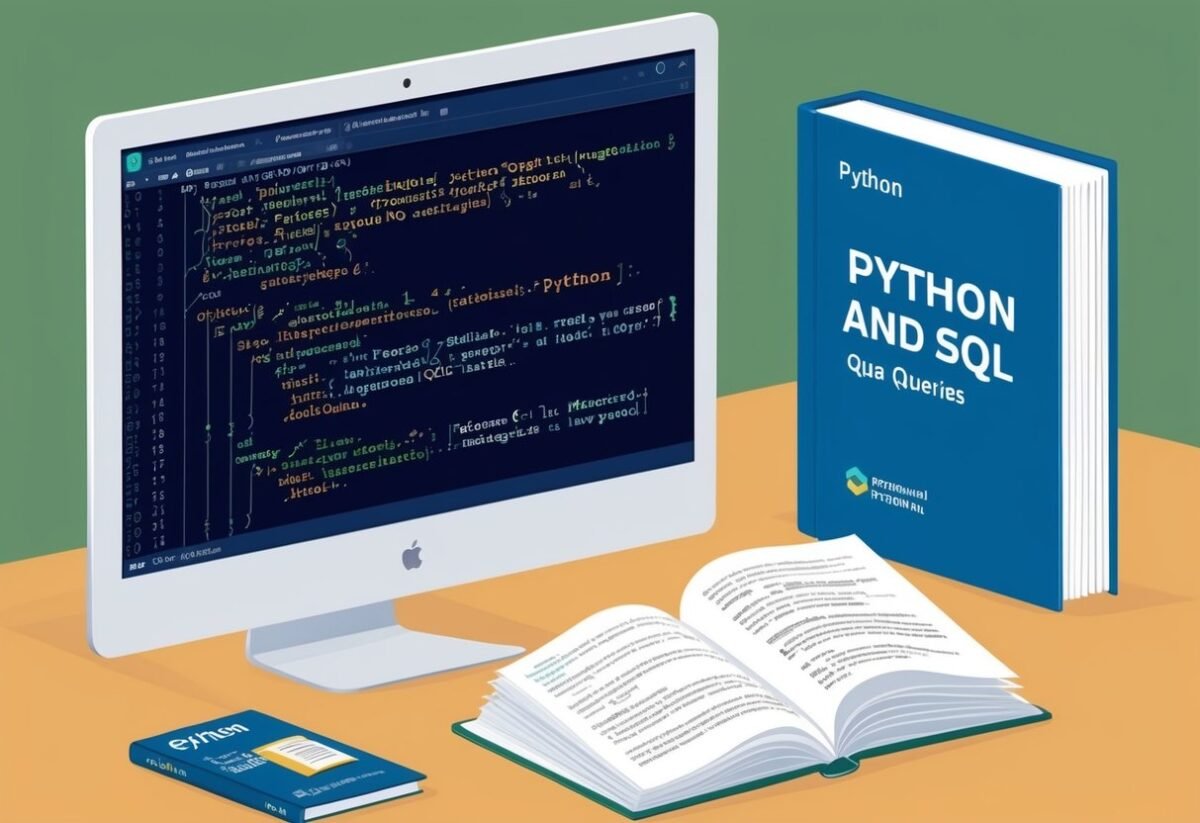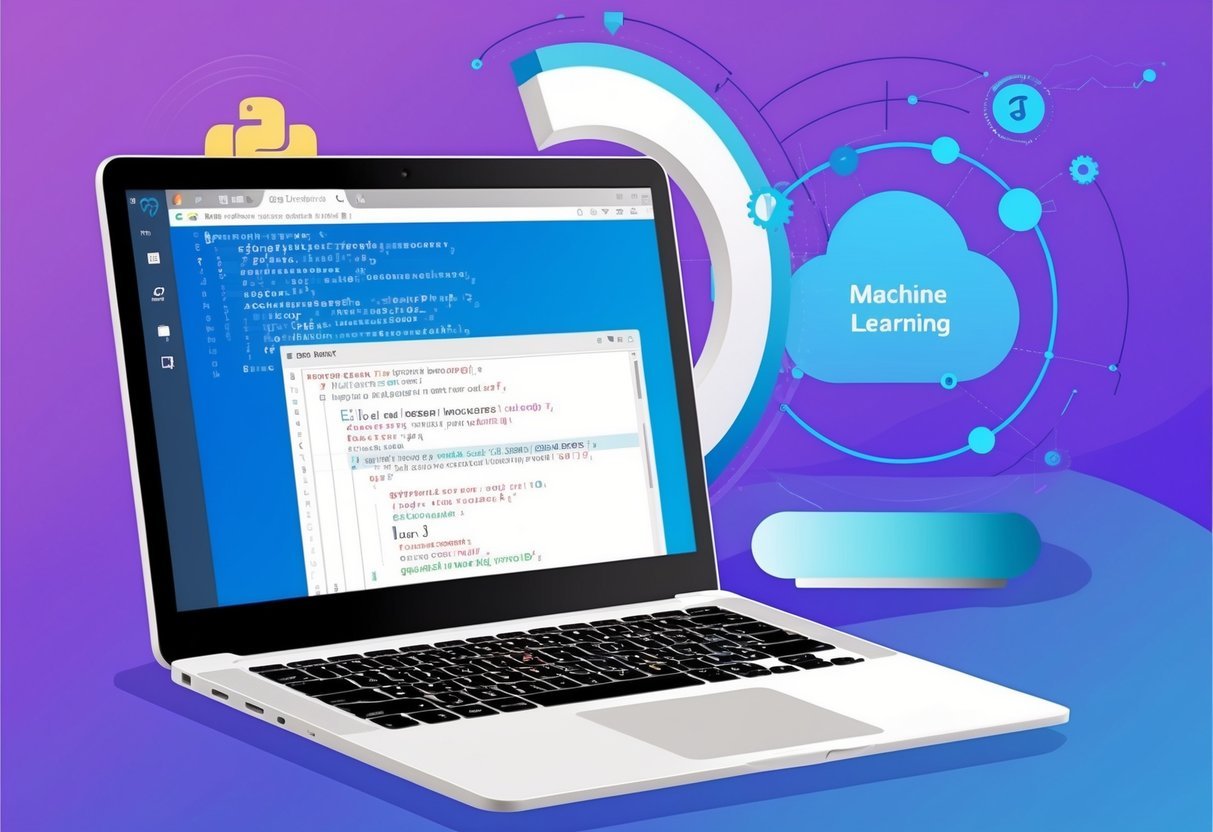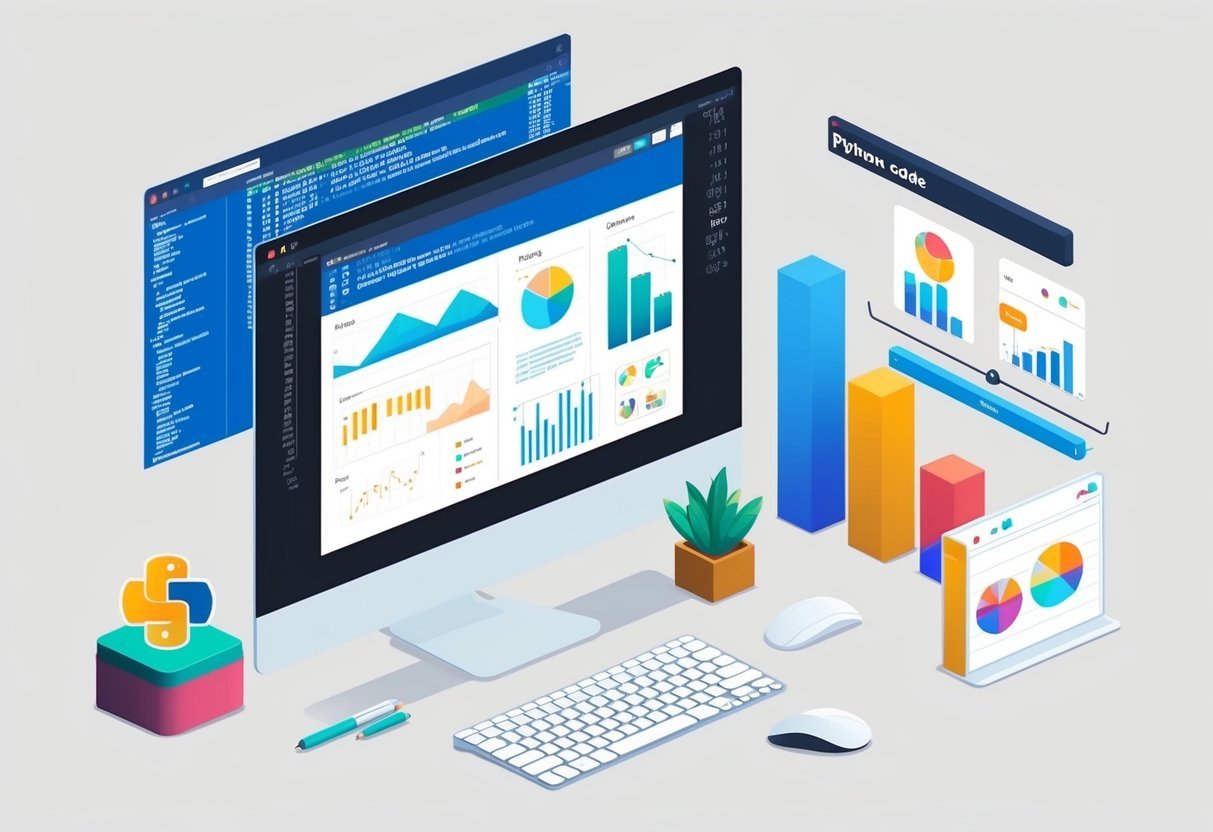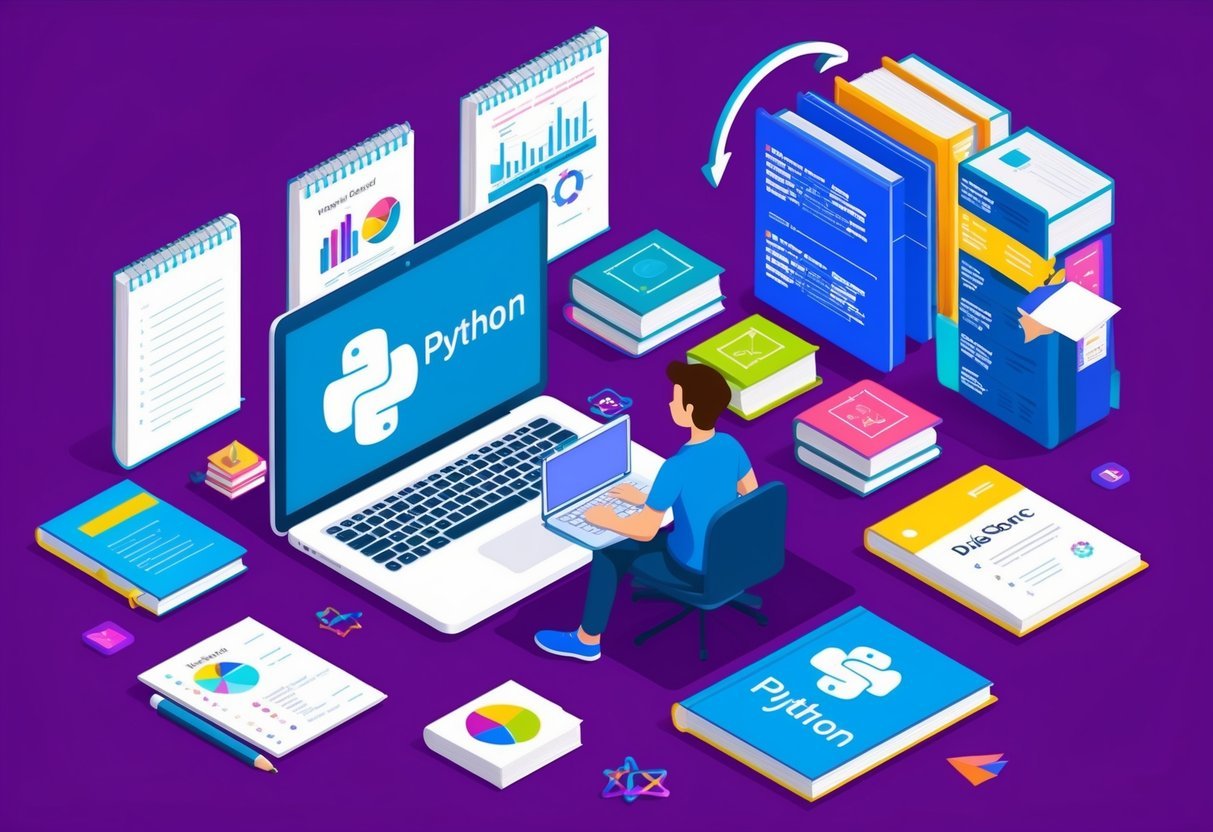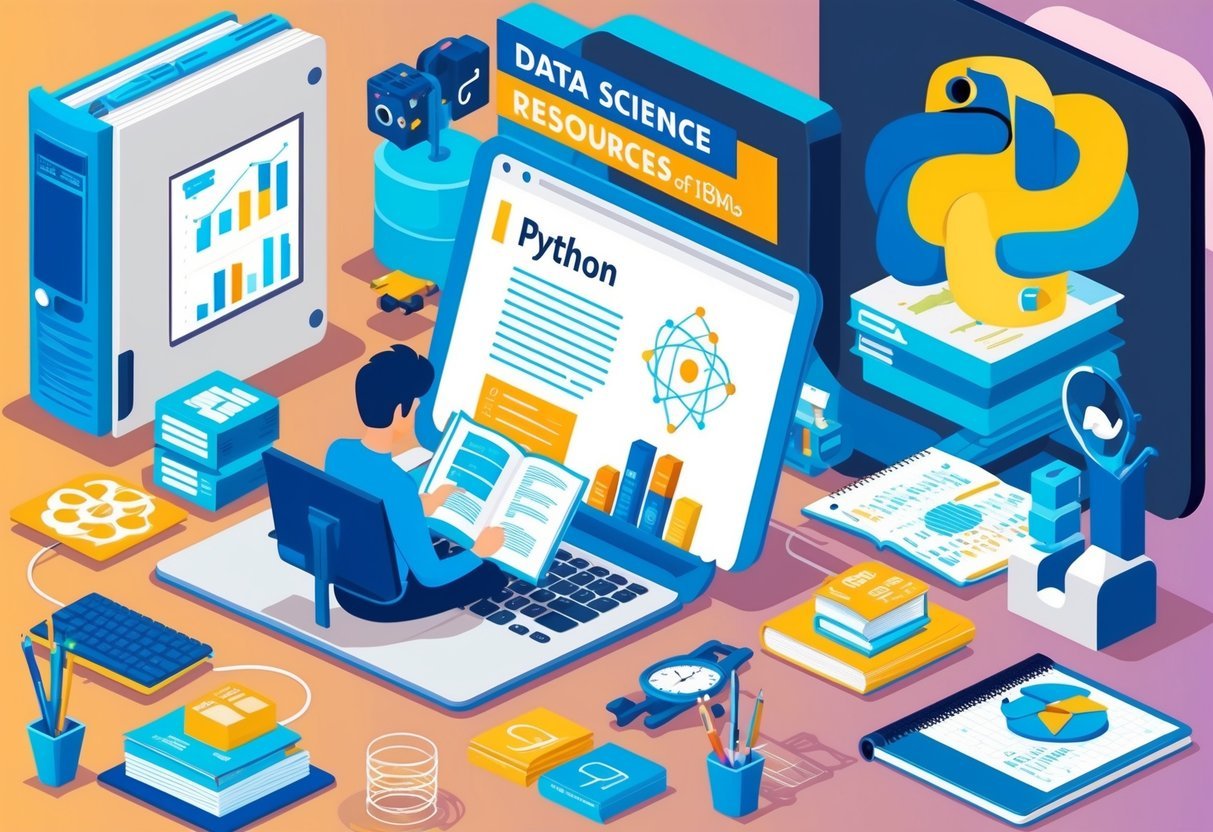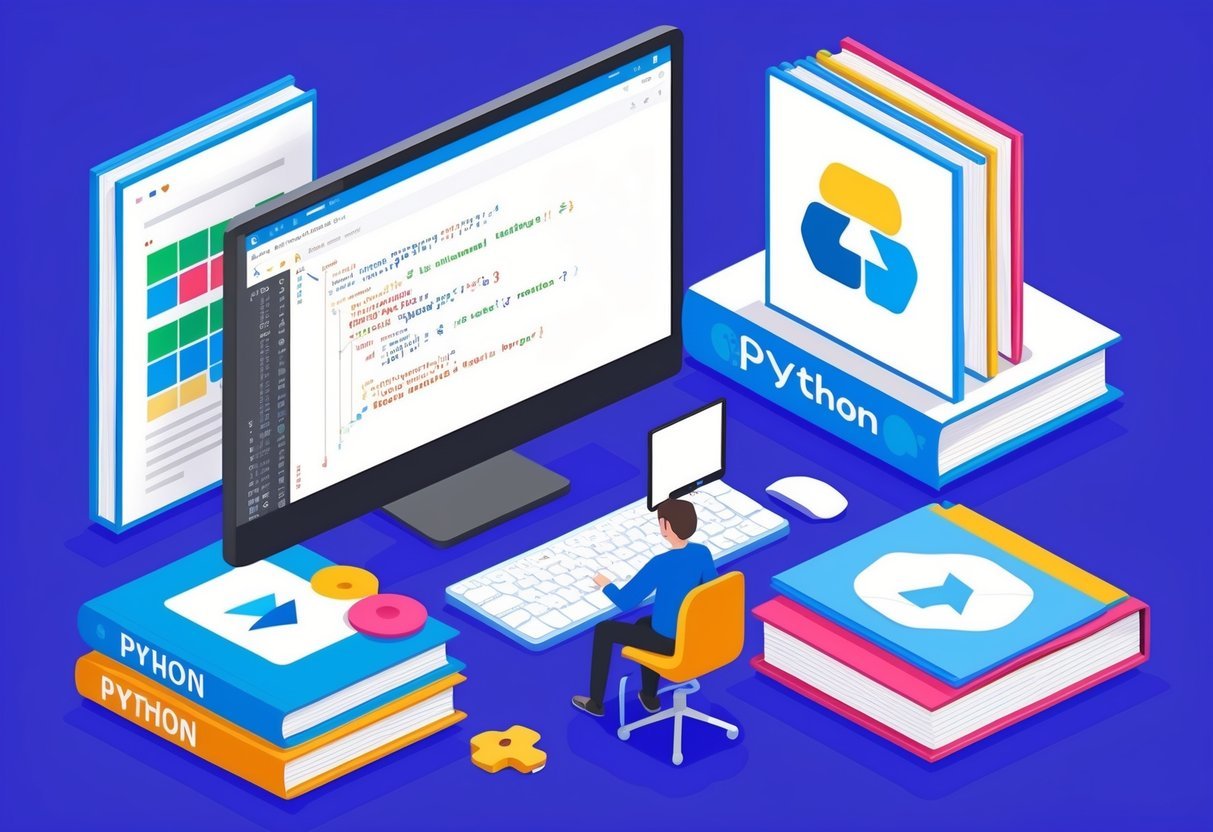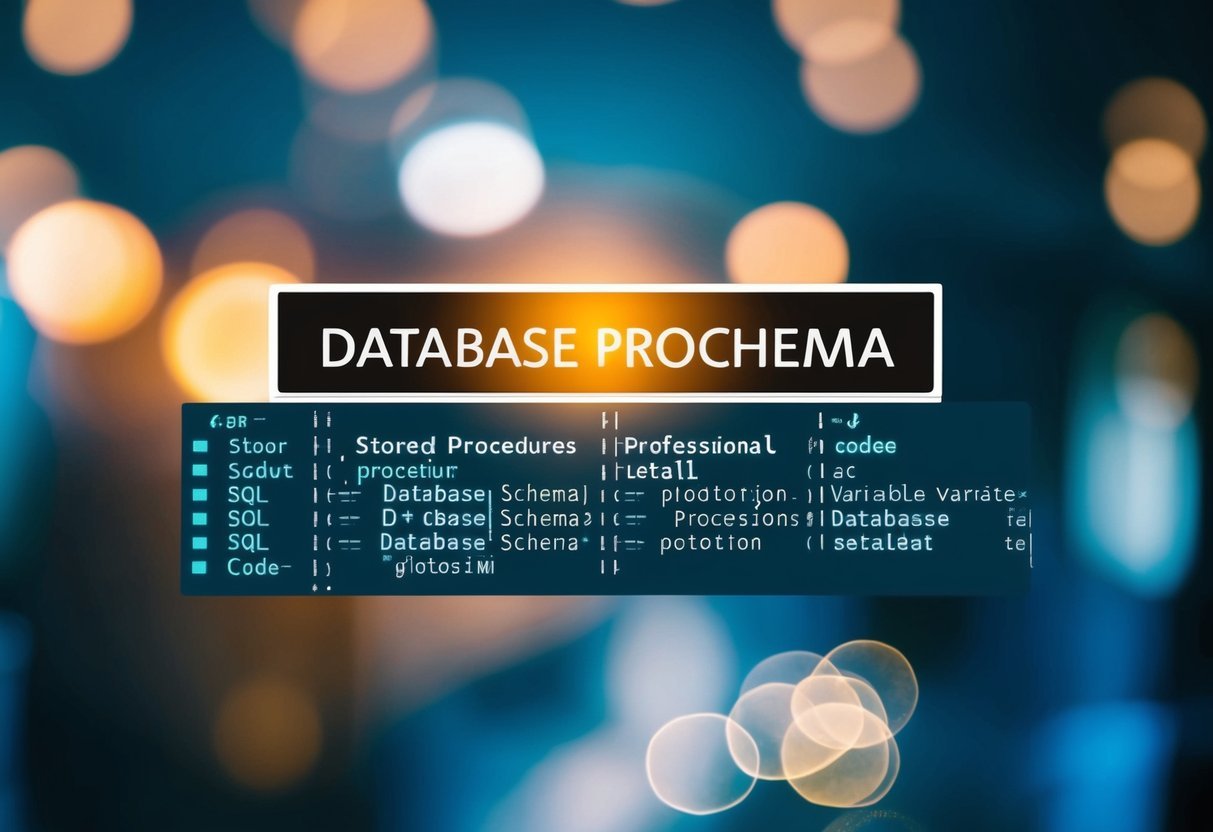Understanding the WITH Statement in T-SQL
The WITH statement in T-SQL is key for structuring complex queries. It defines temporary result sets called Common Table Expressions (CTEs). These CTEs simplify sub-query handling and improve readability. The use of CTEs in T-SQL helps organize code, especially in SQL Server environments.
Essentials of the WITH Clause
The WITH clause in T-SQL provides a way to create a temporary named result set, known as a CTE. This temporary set can be used multiple times within the query it’s defined in. This feature is especially useful for improving query readability and maintaining cleaner code.
By using the WITH clause, developers can organize longer queries neatly. It allows for referencing CTEs like regular tables or views. The clause must be placed before the main query statement. In SQL Server, this can also enable recursion, which is beneficial for hierarchical data tasks.
Common Table Expressions (CTEs)
CTEs are often used to streamline complex queries. They remove the need for subqueries by letting programmers define a table expression. This not only makes the code easier to read but also allows reusing the expression in other parts of the query.
CTEs are defined in the WITH statement, followed by the CTE name and AS keyword. The CTE itself includes a query, which can be used like a table in subsequent queries. In SQL Server, CTEs can use recursive capabilities to solve problems like managing hierarchical data in Transact-SQL.
Setting Up the Environment
Before diving into T-SQL, it’s vital to prepare the system. Important steps include ensuring the SQL Server is correctly installed and ready for use. It’s also helpful to create sample tables and data for hands-on practice. This ensures that anyone can efficiently follow along with examples and gain practical experience.
SQL Server Installation Requirements
To use T-SQL effectively, the first step is installing SQL Server. This software is a key component of any relational database management system. A computer with a 64-bit processor is usually recommended. The user should confirm they have administrative permissions to install the software.
During installation, follow the setup wizard carefully. Select the features needed based on personal or organizational use. Typical choices include the Database Engine Services and SQL Server Management Studio.
Configuring server and authentication modes is also necessary. This involves setting up access via Windows Authentication or mixed mode. These setups ensure that the Server is ready and secured for developing T-SQL queries.
Creating Sample Tables and Data
After installing SQL Server, it’s time to create sample databases and tables to practice T-SQL. Users can start by creating a database using commands like CREATE DATABASE SampleDB. Follow this by constructing tables with sample data entries.
For example, the command CREATE TABLE Employees can be used to set up an employees table. Including columns like ID, Name, and Position makes it possible to populate the table.
This step is crucial for practicing queries with real data. Creating these tables gives a solid foundation for learning T-SQL commands. Familiarity with these setups will facilitate understanding SQL’s structure and functionalities in practical scenarios.
Querying Data with the WITH Clause
The WITH clause is a key feature in T-SQL that simplifies complex queries and improves readability. It allows the creation of Common Table Expressions (CTEs), making it easier to manage and manipulate query data.
Retrieving Data Using WITH
In SQL Server, CTEs are used to simplify queries in relational databases. They help retrieve data by allowing a temporary result set that can be referenced within a SELECT, INSERT, UPDATE, or DELETE statement.
The basic syntax starts with the keyword WITH, followed by the CTE name and the query defining it.
For example, using the WITH clause can help break down complicated queries into more manageable parts. Consider retrieving customer names and their total purchase amounts. Using a CTE, one could first calculate purchase totals in a subquery and then select the required columns from the CTE. The CTE appears just before the main query, which improves readability and maintenance.
Joining Tables with CTEs
CTEs are useful for joining tables, particularly when dealing with complex joins in SQL Server. They allow for the use of multiple CTEs, which can be referenced in the main query. This is particularly helpful when data needs to be aggregated or filtered before being used in further join operations.
Consider a scenario where a company needs to join employee information from different tables and aggregate total sales. Using a CTE makes it easier to first create a temporary result, simplifying multi-table joins.
Also, CTEs can nest within themselves, enabling more intricate operations, like multi-level joins in relational databases.
Advanced WITH Statement Techniques
Advanced techniques using the WITH statement in T-SQL include recursive common table expressions (CTEs) which are used for hierarchical data, and performance considerations to optimize queries. These aspects are useful when dealing with complex SQL statements and large relational databases.
Recursive CTEs
Recursive CTEs allow SQL statements to repeat within the query itself. They help manage hierarchical data such as organizational charts or file directories.
A recursive CTE includes two parts: an anchor member and a recursive member. The anchor member is the base query, while the recursive member references the CTE itself to maintain the loop. Each execution adds a new result set and passes it back to itself.
This technique is valuable for tasks like calculating cumulative totals or working through parent-child relationships. When using recursive CTEs, make sure to include a STOP condition to prevent infinite loops.
Performance Considerations
Performance is a critical factor when using WITH statements in relational databases. Queries often require joins, aggregations with GROUP BY, and indexing.
Indexes help speed up data retrieval operations. Proper use of indexes can reduce I/O operations and improve query performance. However, using too many indexes can negatively affect performance due to the overhead on data modification operations.
Joins and GROUP BY can also impact performance. Efficient query design involves minimizing unnecessary joins and ensuring that GROUP BY operations use indexed columns.
Monitoring and tuning are essential to maintaining optimal execution time in complex queries.
Modifying Data with the WITH Statement

The WITH statement in T-SQL is a useful tool for organizing complex queries. It allows users to create Common Table Expressions (CTEs) that can simplify modifying data operations in SQL Server. Both updating and deleting data can be streamlined by using CTEs in structured ways.
Updating Data within CTEs
Using CTEs to update data can enhance clarity and efficiency. By defining a CTE before an update statement, users can separate logic from execution. This method is helpful when changes involve complex calculations or join operations across multiple tables.
After defining a CTE, you can reference it in the update clause, reducing repetition and potential errors.
When updating data, SQL Server processes the CTE first, then applies the changes. This approach keeps query logic tidy and ensures updates occur in a defined order. It also provides a temporary named result, making it easier to test and adjust parts of the query without affecting the underlying data directly.
Deleting Data in Complex Queries
Deleting data using CTEs helps manage complicated deletion requirements, particularly when targeting rows from multiple linked tables. A CTE can be used to isolate rows that need to be removed based on specific conditions.
Once the CTE is defined, a delete statement can refer to it, ensuring only the selected rows are affected.
Implementing CTEs for deletions reduces the risk of performance issues and unintended data loss. By organizing the conditions within a CTE, users can better visualize the data removal process. This method supports more transparent and flexible query development, particularly for complex applications that involve numerous tables and conditions.
Error Handling and Debugging
Effective error handling and debugging are crucial when working with T-SQL, especially when using the WITH statement for Common Table Expressions (CTEs). Understanding common errors and how to debug them can significantly improve efficiency and reliability in database programming.
Common CTE Errors
When using the WITH statement in T-SQL, encountering errors can be frustrating. Common errors include syntax issues, name conflicts, and incorrect data types.
It’s important to ensure that the CTE is correctly defined and follows SQL Server rules. Misnaming columns or tables is a frequent issue.
Another typical error involves recursive CTEs. They must include a termination condition to prevent infinite loops.
To avoid these problems, carefully validate each part of the CTE. Check for missing keywords or statements. Using clear naming conventions helps reduce conflicts.
By understanding these errors, programmers can write faster and more reliable T-SQL code.
Debugging WITH Queries
Debugging WITH statements requires a strategic approach. SQL Server contains several tools for effective debugging.
SQL Server Profiler can be used to monitor query performance. This helps identify slow or problematic queries within a WITH expression.
The SQL Server Management Studio (SSMS) offers built-in debugging features. These include the ability to set breakpoints and step through queries line by line.
This approach helps isolate errors in complex queries.
Another technique is to break down complex queries. Testing each part separately can make it easier to find issues. By focusing on individual parts, developers gain insights into how the entire query functions, making debugging more manageable and efficient.
Security and Permissions
Security and permissions are crucial in relational database management, particularly in SQL Server environments. Understanding how to manage these can help prevent unauthorized access and ensure data integrity.
WITH Clause and Security Best Practices
The WITH clause in T-SQL allows creating common table expressions (CTEs) which temporarily hold result sets for further queries. Establishing row-level security can be enhanced through the use of the WITH clause. Using this clause, one can implement security precautions by defining specific user access to data.
It’s critical to focus on adhering to security best practices.
Ensure that permissions are only granted to necessary users or roles. Regularly audit the database to detect any unauthorized access.
Applying the principle of least privilege helps limit users’ access rights only to what is necessary for them to perform their duties.
Managing Access with WITH Queries
Managing permissions effectively requires a detailed approach. In SQL Server, assigning permissions begins with statements like GRANT, REVOKE, and DENY.
When using the WITH clause, it’s possible to manage access more specifically within a relational database.
This feature of SQL allows for a controlled environment where user permissions are finely tuned. For example, permissions can be managed at the column level by expanding typical queries to check necessary column permissions.
By setting up these controls and continuously monitoring access, administrators can maintain a secure database environment that meets organizational security standards.
Advanced SQL Server Features
Advanced SQL Server features enhance how data is managed and retrieved. They allow for more complex queries and efficient database operations. Key aspects include integrating Common Table Expressions (CTEs) with stored procedures and leveraging synonyms in queries to simplify database interactions.
Integrating CTEs with Stored Procedures
Integrating Common Table Expressions (CTEs) with stored procedures in SQL Server can streamline query processes. CTEs allow for temporary result sets that can be referenced within a SQL statement. When combined with stored procedures, which store and execute SQL code efficiently, users can gain flexibility and performance benefits.
Incorporating CTEs within stored procedures can lead to improved readability and maintenance. This is because CTEs help break down complex queries into more manageable parts. Stored procedures benefit from this clarity, making debugging and updates more straightforward. Additionally, users can use CTEs for recursive queries within stored procedures, enabling operations like hierarchical data processing. This integration supports SQL Server’s role in handling complex data operations within relational databases.
Leveraging Synonyms in Queries
Synonyms in SQL Server enable easier management of object names by providing alternative names. This is especially useful in large databases where object names might be lengthy or complex. Synonyms simplify queries and make them more intuitive, which can save time for database administrators and developers.
Using synonyms can enhance query flexibility and portability. When a database schema changes, synonyms can act as an abstraction layer, reducing the need for extensive query rewrites. This feature is beneficial when migrating or integrating different databases. Synonyms also support security by restricting direct access to base objects. They offer a powerful mechanism to manage and shield the underlying database structure while maintaining efficient query processes in relational databases.
Optimizing Performance with WITH Clause
Optimizing performance with the WITH clause in T-SQL involves careful attention to execution plans and index usage in Common Table Expressions (CTEs). Proper use can speed up query data retrieval and improve overall SQL Server efficiency.
Understanding Execution Plans
Execution plans are crucial for understanding how SQL Server processes queries with CTEs. They show the steps taken to retrieve query data, helping identify bottlenecks. To view a query’s execution plan, use SQL Server Management Studio’s “Display Estimated Execution Plan” feature.
Studying the execution plan reveals how the database engine accesses data. It provides insight into the operations performed, such as scans or seeks. Efficient execution plans minimize costly operations, like full table scans, which can slow down performance.
By analyzing execution plans, users can optimize queries leveraging the WITH clause. This involves adjusting the query structure or rewriting parts to ensure an optimal path. Understanding the plan can lead to more effective data retrieval and faster query execution.
Index Usage in CTEs
Indexes are essential for speeding up data access in SQL Server. When using CTEs with the WITH clause, proper indexing is key to performance. Indexes allow the database engine to locate rows quickly, reducing the need for full table scans.
Careful index planning can result in significant performance gains. When defining a CTE, evaluate if existing indexes meet the requirements or if additional indexing is necessary. The right indexes can lead to better query speed and efficiency.
Additionally, consider the impact of using clustered vs. non-clustered indexes with CTEs. Understanding their roles and planning accordingly can enhance query performance and data retrieval. Effective index management in CTEs ensures that SQL Server can handle complex queries efficiently.
Database Design and CTEs
Common Table Expressions (CTEs) play a crucial role in improving the clarity and efficiency of database queries. They provide a structured approach to dealing with complex queries that involve relational database concepts, such as joins and aggregations. These subsections explore the benefits of incorporating CTEs into database design and their impact on database normalization.
Incorporating CTEs into Database Design
Integrating CTEs into database design can enhance query readability and maintenance. By structuring complex queries in a logical and compartmentalized way, CTEs allow developers to simplify their SQL code. This results in more understandable and manageable database objects, such as views or stored procedures.
In modern relational databases, CTEs can be used to build hierarchical data structures or perform recursive queries effectively. This means that problems requiring such logic can be tackled with fewer lines of code. Moreover, employing CTEs in database design can lead to improved system performance by making complex operations more efficient.
CTEs and Database Normalization
CTEs also influence database normalization by facilitating the creation of elegant and efficient SQL queries that adhere to normalized forms. By using CTEs, repetitive data structures are avoided, promoting cleaner separation of data, which supports the goals of normalization.
Normalization ensures minimal redundancy and reliance on raw data. CTEs allow designers to express complex relationships among normalized data in an understandable manner, which complements the efforts of creating a well-structured RDBMS. By leveraging the capabilities of CTEs, developers can more easily maintain relational consistency and enforce integrity constraints, leading to a robust and efficient database management system.
Educational Resources
To effectively learn T-SQL, utilizing a variety of educational resources can be incredibly helpful. Both online courses and textual guides offer comprehensive learning opportunities for beginners and advanced learners alike.
Online Courses and Tutorials
Online platforms offer extensive resources for learning T-SQL. Microsoft Learn provides a structured video series that includes practical examples and SQL tutorials. These courses often feature interactive exercises to solidify understanding. Websites such as Udemy and Coursera host comprehensive tutorials tailored to different learning speeds and styles.
These platforms often include quizzes to test progress and provide certifications upon completion. Learners can benefit from the flexibility of online education, accessing lessons anytime that fits their schedule. This accessibility makes online courses a valuable tool for anyone aiming to master T-SQL commands and statements.
Books and Textual Guides
Books provide detailed insights into T-SQL, often serving as reference materials for both newcomers and seasoned programmers. Titles like Beginning T-SQL offer step-by-step instructions on writing SQL queries and understanding complex statements.
Textual guides usually include examples that illustrate key concepts and common pitfalls. Physical and digital formats are available, allowing learners to choose what suits them best. For any programmer looking to deepen their SQL skills, these books can serve as invaluable resources, providing thorough explanations that are essential for understanding and using T-SQL effectively.
Preparing for Certification

To prepare for a SQL certification successfully, candidates should focus on using study guides and practice tests and understand key topics for the SQL certification exam. This targeted approach can aid individuals aiming to master T-SQL and related SQL concepts.
Study Guides and Practice Tests
Study guides provide structured learning for the SQL certification. They often break down complex topics into understandable sections, which is helpful for anyone new to SQL or T-SQL programming. Using materials like books or online resources focused on T-SQL or SQL Server can be beneficial.
Practice tests are another essential resource. They help familiarize candidates with the exam format and types of questions. By regularly taking these tests, individuals can identify areas where they need more study, increasing their chances of success in the actual exam.
Key Topics for the SQL Certification Exam
Understanding key topics is crucial for certification success. These include SQL syntax, relational databases, and the use of the T-SQL programming language. It is vital to have a solid grasp of database design, the manipulation of data with DML statements, and how to manage a SQL database efficiently.
Candidates should also explore resources on Microsoft Learn to supplement their study. This platform offers tutorials and documentation that focus on practical applications and help strengthen theoretical understanding.
Frequently Asked Questions
The WITH statement in T-SQL is important for creating Common Table Expressions (CTEs), which can aid in making SQL queries more readable. This section covers various aspects of the WITH statement, including its purpose, benefits for query performance, common use cases, and how it compares to temporary tables.
What is the purpose of the WITH statement in T-SQL?
The WITH statement is used to define CTEs, which act as temporary result sets that can be referenced within a query. By using CTEs, complex queries become easier to structure and debug, as they can be broken down into more manageable parts.
How can the WITH statement enhance SQL query readability and performance?
CTEs created with the WITH statement improve the readability of SQL queries by simplifying complex joins and subqueries. They provide a way to reference results multiple times in a query without redundant coding, which can also optimize query performance by reducing execution time.
What are common use cases for Common Table Expressions (CTEs) in T-SQL?
CTEs are frequently used for recursive queries, hierarchical data retrieval, and to simplify aggregations or window functions. They are ideal in scenarios where data needs to be referenced multiple times in a concise and efficient manner, helping to manage temporary data sets within queries.
Can you provide examples of recursive queries using the WITH statement in T-SQL?
In T-SQL, recursive queries using the WITH statement allow traversing hierarchical data, such as organizational charts. A CTE defines a base case and recursively calls itself to process parent-child relationships, effectively handling data that includes levels, hierarchies, or dependencies.
What are the differences between temporary tables and WITH statement CTEs in T-SQL?
While both temporary tables and CTEs provide ways to handle temporary data, they function differently. Temporary tables persist during the session and may require manual cleanup. CTEs, however, exist only during the execution of a single query and are lighter in terms of resource usage.
Are there any limitations or precautions to consider when using the WITH statement in T-SQL?
CTEs have limitations in terms of scope and usage. They cannot be indexed or referenced by other CTEs directly. Recursive CTEs can also lead to performance issues if not optimally designed.
It’s crucial to be mindful of the complexity and potential impacts on execution plans.

